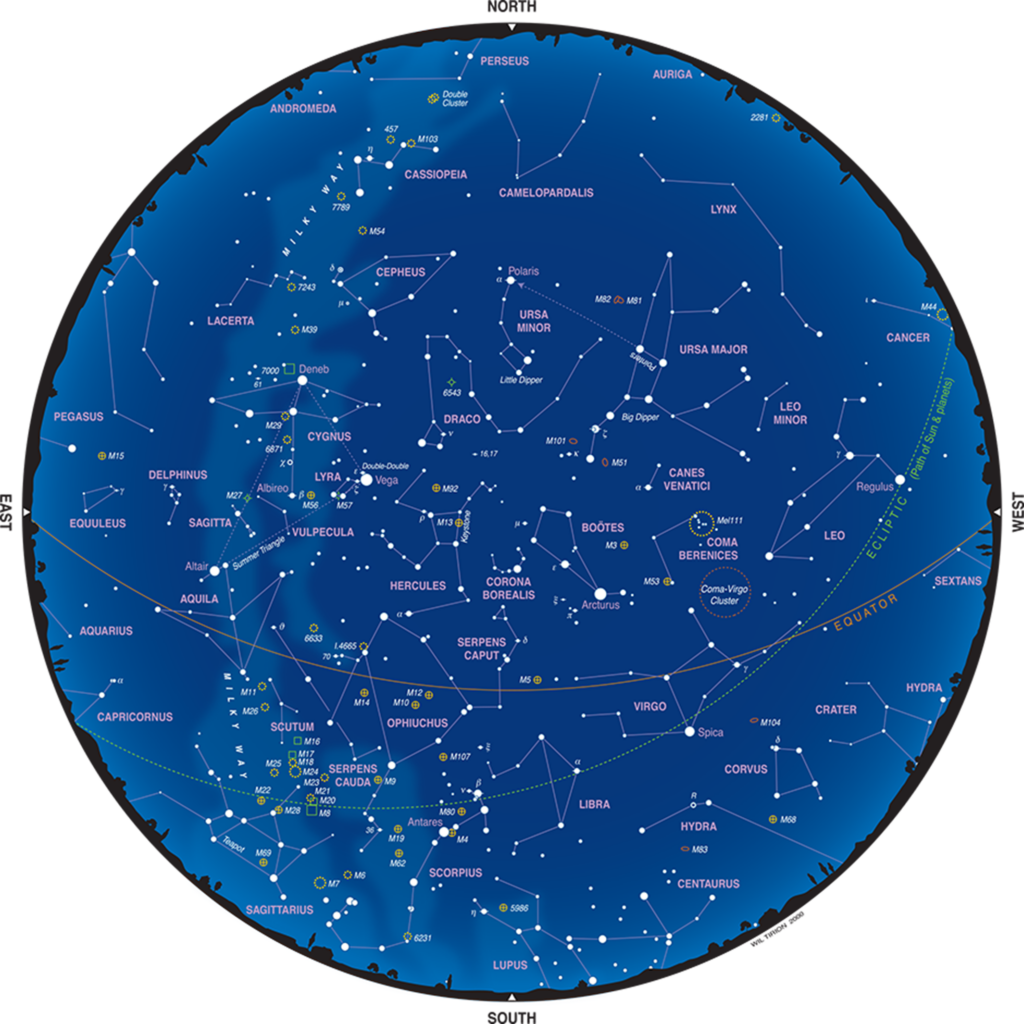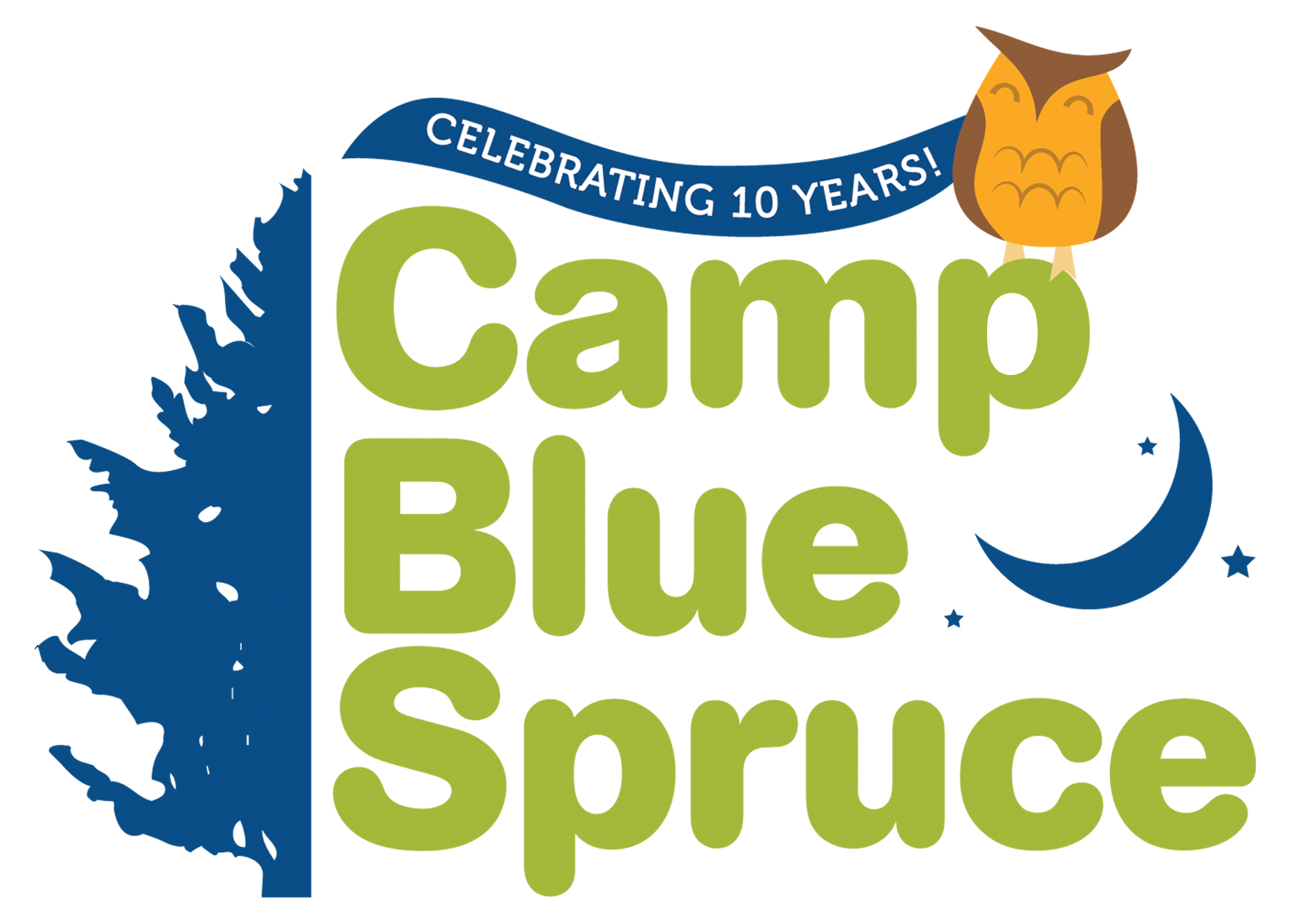By Astronomer Jim Higgs
July will be a very good month for several astronomy observations. There will be swath of planets visible in the early morning sky, several pretty moon-planet conjunctions, meteors, and bright star clusters. So let’s get started:
In The Early Pre-dawn Morning:
- The Planet Show that was so visible in late June is still in the sky, although the compactness of the group is a bit more spread out. Nonetheless, the following schematic still applies, stretching several planets out between Saturn and Mercury:
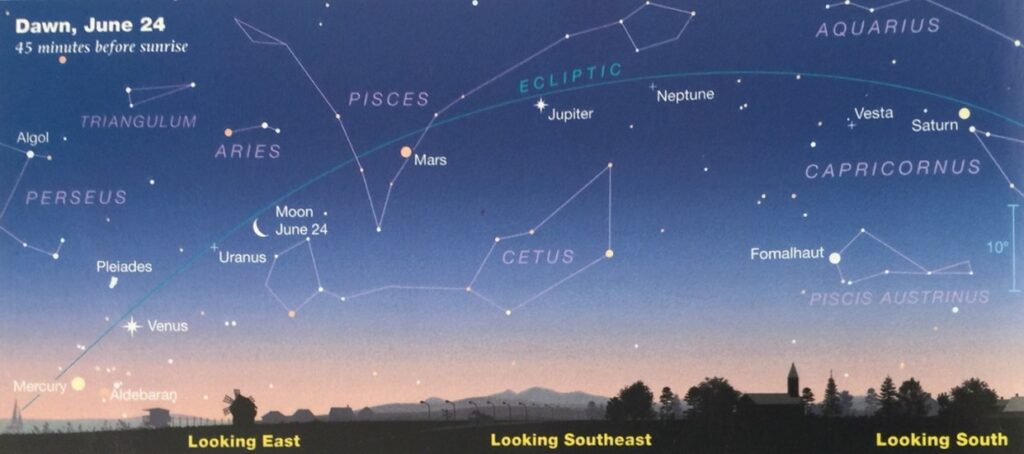
- On July 17th, a waning (getting smaller) gibbous moon (this means about 2/3 of a full moon) joins the array of planets in the early morning sky, making for a pretty observation.
- On July 24th, there will be a pretty line-up of Venus, the moon (now a crescent), Mars, Jupiter, and Saturn.
In The Evening:
- On July 10th, the moon will be only 2 degrees above the red-giant star Antares. Antares, near the near of the constellation Scorpius, is a huge star, as large as the orbit of Mars!
- The constellation of Hercules, the hunter, will be due south and almost overhead. Hercules is one of my favorite constellations because its stars are really configured like a person (well, sort of!), its main stars are bright, and because within Hercules is the grand globular star cluster M13. M13 can just barely be seen through binoculars, but through a telescope, M13 is beautiful, being comprised of several hundred stars. Below are pictures Hercules and of M13. Use the below star chart to find Hercules.
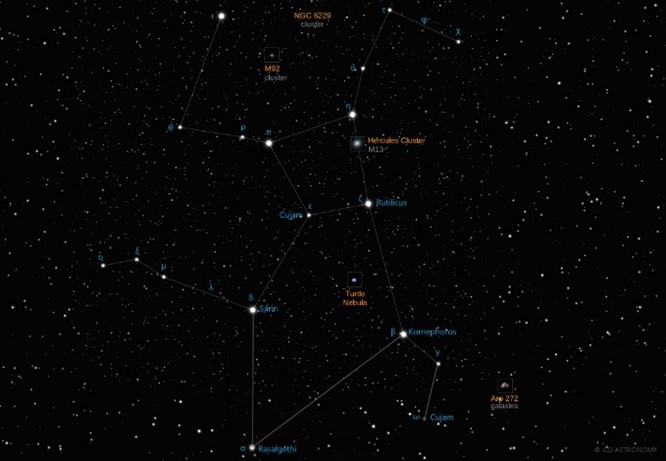
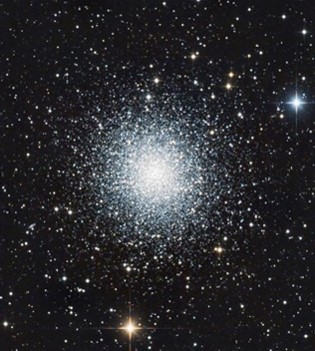
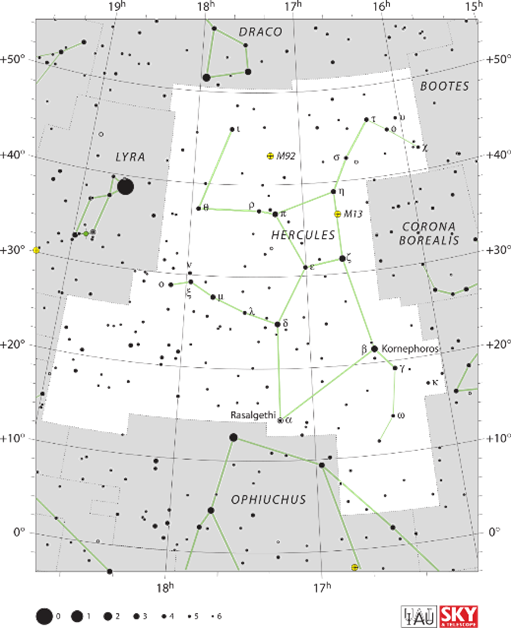
- Saturn will finally move into the night-time sky in July, but in early July if doesn’t rise until about midnight.
- As we discussed in the past, the very early morning is always the best time to see a meteor shower, but sometimes people just stay up late in July! If you’re one of those and you spend an hour or so watching the late-night sky, there’s a good chance you’ll see some meteors, part of the Delta Aquarid metor shower. There should be some meteors visible all month, but it will peak near the end of July.
The following Star Chart from Orion Telescopes website
